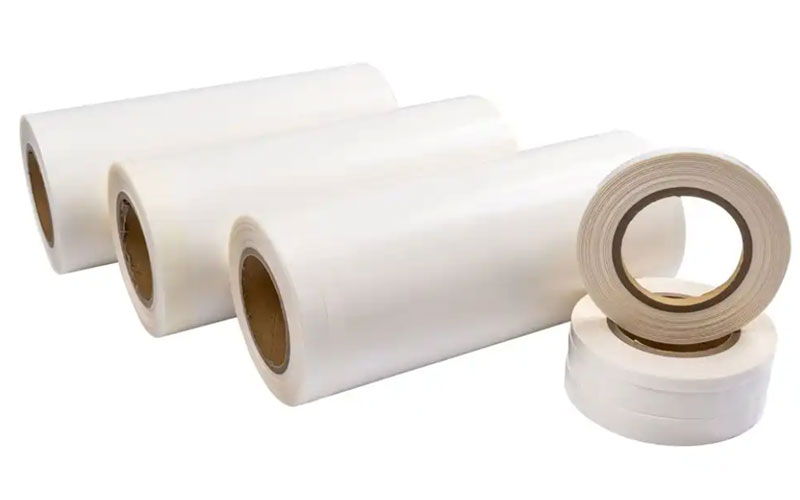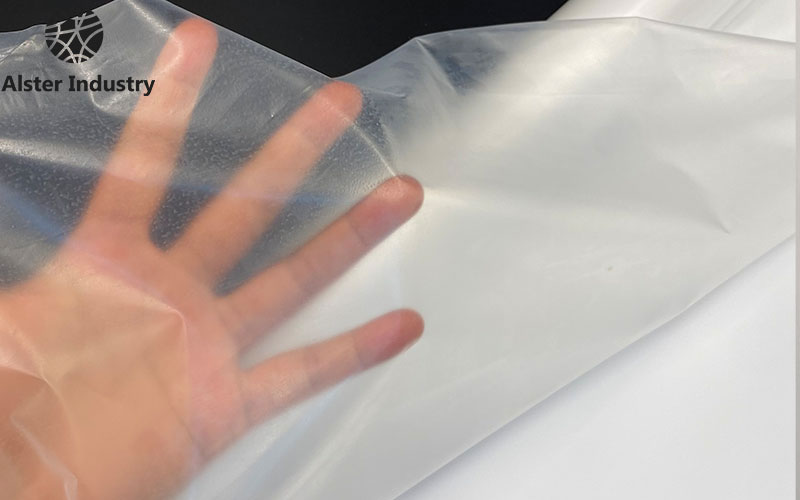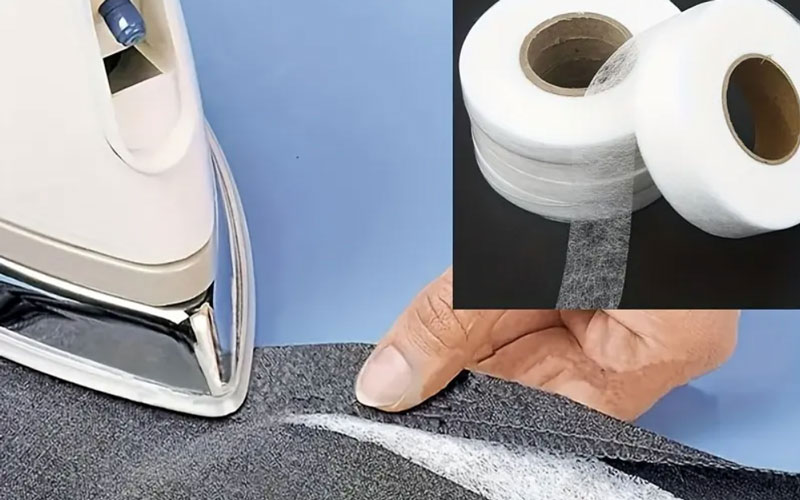In the modern textile industry, the use of hot melt adhesive films is becoming more widespread, especially TPU (thermoplastic polyurethane) hot melt adhesive film. Due to its unique properties and diverse application scenarios, TPU hot melt adhesive film has become an important material in fabric processing. TPU hot melt adhesive films are widely used in fabric lamination, repair, and decoration due to their excellent wear resistance, elasticity, environmental friendliness, and good processing performance. This article will provide a detailed introduction to the applications and characteristics of TPU hot melt adhesive film for cloth.

What is TPU Hot Melt Adhesive Film?
TPU hot melt adhesive film is a thin film material made from thermoplastic polyurethane (TPU), with hot melt and hot press molding properties. When heated to a specific temperature, it softens and becomes a viscous liquid, and then solidifies into a strong adhesive layer after cooling. TPU hot melt adhesive film is commonly used for bonding, repairing, or decorating fabrics, and is widely used in industries such as clothing, home textiles, footwear, car seats, and medical products.

Types of TPU Hot Melt Adhesive Films
Depending on the application requirements, there are different types of TPU hot melt adhesive films, including:
Single-sided adhesive film: This hot melt adhesive film has hot melt adhesive on one side and regular TPU film on the other side. It is suitable for applications where one side is bonded to fabric, such as garment repairs or fabric bonding.
Double-sided adhesive film: Double-sided adhesive film has hot melt adhesive on both sides, making it suitable for fabrics or materials that require bonding on both sides, such as bonding insoles or laminating double-layer fabrics.
Colored hot melt adhesive film: This film is available in various colors and is often used in clothing decoration, logo design, or other applications that require aesthetic effects.
Environmentally friendly TPU hot melt adhesive film: Made from environmentally friendly raw materials, this film meets international environmental standards and is suitable for markets with environmental protection requirements, particularly for use with fabrics combined with leather.
Characteristics of TPU Hot Melt Adhesive Film
- Excellent flexibility and elasticity
TPU hot melt adhesive film offers outstanding flexibility and elasticity, ensuring that the fabric’s original properties are not compromised during the bonding process. It adheres closely to the fabric, maintaining the softness and comfort of the material, making it suitable for various types of fabrics, especially clothing and sports shoes that require high elasticity and flexibility.
- Good durability and wear resistance
TPU hot melt adhesive film is highly durable and wear-resistant, maintaining its bonding performance even after multiple washings or friction. It performs well in heat resistance, UV resistance, and aging resistance, making it ideal for outdoor and sportswear applications and extending the product’s lifespan.
- Environmentally friendly and harmless
TPU hot melt adhesive film is an environmentally friendly material that does not contain harmful chemicals (such as phthalates or heavy metals) and complies with global environmental regulations. Unlike traditional solvent-based adhesives, the use of TPU hot melt adhesive film does not involve volatile organic compounds (VOCs), which is more in line with green production concepts.
- Pollution-free processing method
The processing of TPU hot melt adhesive film does not require solvents. Fabric bonding can be completed through a hot-pressing process, avoiding the potential pollution issues associated with traditional glue. This makes TPU hot melt adhesive film increasingly popular in the textile industry, particularly in modern production environments with stringent environmental protection requirements.
- Excellent bonding performance
TPU hot melt adhesive film achieves strong bonding at low temperatures, making it especially suitable for high-end fabric processing. It effectively bonds different materials and maintains good adhesive strength. It also has good water resistance, which allows it to maintain stable bonding performance in humid environments, making it widely used in the production of outdoor and sportswear.
- Efficient and energy-saving production method
The production process of TPU hot melt adhesive film is relatively simple. The hot melt bonding method does not require the use of traditional liquid adhesives, significantly reducing energy consumption in production and improving production efficiency. Additionally, since the film is pollution-free and solvent-free, it reduces the environmental burden.
- Wide applicability
TPU hot melt adhesive film is widely used for bonding various types of fabrics, such as sportswear, underwear, footwear, home textiles, automotive interiors, etc. In particular, in the sports shoe and sportswear industries, TPU hot melt adhesive film, as the core material for seamless bonding technology, offers excellent lamination effects and provides comfortable, stable, and durable products.

Advantages of TPU Hot Melt Adhesive Film in Fabric Applications
- Improved production efficiency
The TPU hot melt adhesive film uses the hot melt process, which reduces the steps required for traditional manual sewing and glue bonding. During production, only simple heating and pressing operations are needed to achieve tight bonding between fabrics, greatly improving production efficiency and reducing costs.
- Improved product quality
By using TPU hot melt adhesive film, fabrics can be quickly bonded without affecting their appearance, preventing issues such as stretching and wrinkling that might occur with traditional sewing methods. This provides higher aesthetics and quality assurance for products like clothing and footwear.
- Raw material and cost savings
Thanks to the excellent bonding performance of TPU hot melt adhesive film, fabric waste can be minimized. Compared to traditional sewing or gluing techniques, the use of hot melt adhesive film is more efficient, which helps to better utilize materials and reduce raw material waste and production costs.
Summary
As an advanced adhesive material, TPU hot melt adhesive film offers significant advantages in fabric processing. It not only provides excellent flexibility, durability, and environmental performance but also improves production efficiency and product quality, reduces costs and waste, and meets the modern textile industry’s needs for environmentally friendly and efficient production. With continuous technological advancements, the application field of TPU hot melt adhesive film will continue to expand, becoming an indispensable material in fabric processing and the textile industry.






